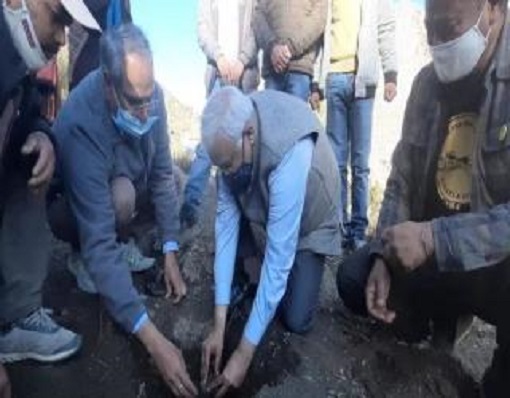New Delhi: Asafoetida, one of the important spices in the Indian kitchen and also known for its medicinal properties, will subsequently be produced in India. Asafoetida plantation was done for the first time in India at the Kwaring village in the Lahaul valley of Himachal Pradesh, at 11,000 feet above sea level. This Asafoetida variant was developed scientifically in the laboratory of the Institute of Himalayan Bioresource Technology (IHBT) at Palampur.
1,200 tonnes of Asafoetida is imported into India per year. 90% of this comes from Afghanistan, 8% from Uzbekistan and 2% from Iran. 50% of the global Asafoetida imports are into India. This is the highest import of Asafoetida. Cost of Asafoetida is ₹35,000 per kilogram. India spends nearly USD 100 million on import of Asafoetida. Last year, nearly 1,500 tonnes of raw Asafoetida was imported from Afghanistan, Uzbekistan and Iran and ₹9.42 billion were spent for it.
IHBT director Dr Sanjay Kumar planted an Asafoetida sapling in one of the fields in Kwaring. Till date, there has been no Asafoetida farming in India. IHBT has imported the seeds from Afghanistan and developed the sapling in a very scientific manner. The IHTB scientists have developed seven different strains of Asafoetida. The IHTB director informed that the atmospheric temperature has to be in the range of 20 to 30 degrees Celsius.
The farmers will have to spend nearly ₹ 300,000 per hectare over the next five years on the Asafoetida farms, and from the fifth year, they will get a minimum return on their investment of ₹1 million per annum. This crop will prove to be a game-changer for the farmers in the cold places. IHTB director Dr Sanjay Kumar informed that currently, 300 hectares of land has been selected for Asafoetida farming.
IHTB has chosen Lahaul-Spiti as the first district for Asafoetida farming. After that, the Asafoetida seeds will be distributed to seven farmers in Madgra, Billing, Kyelang and Kwaring. The cold climate is suitable for Asafoetida. The IHTB scientists have expressed confidence that after the success of the project, the life of the farmers in the region will change.


















